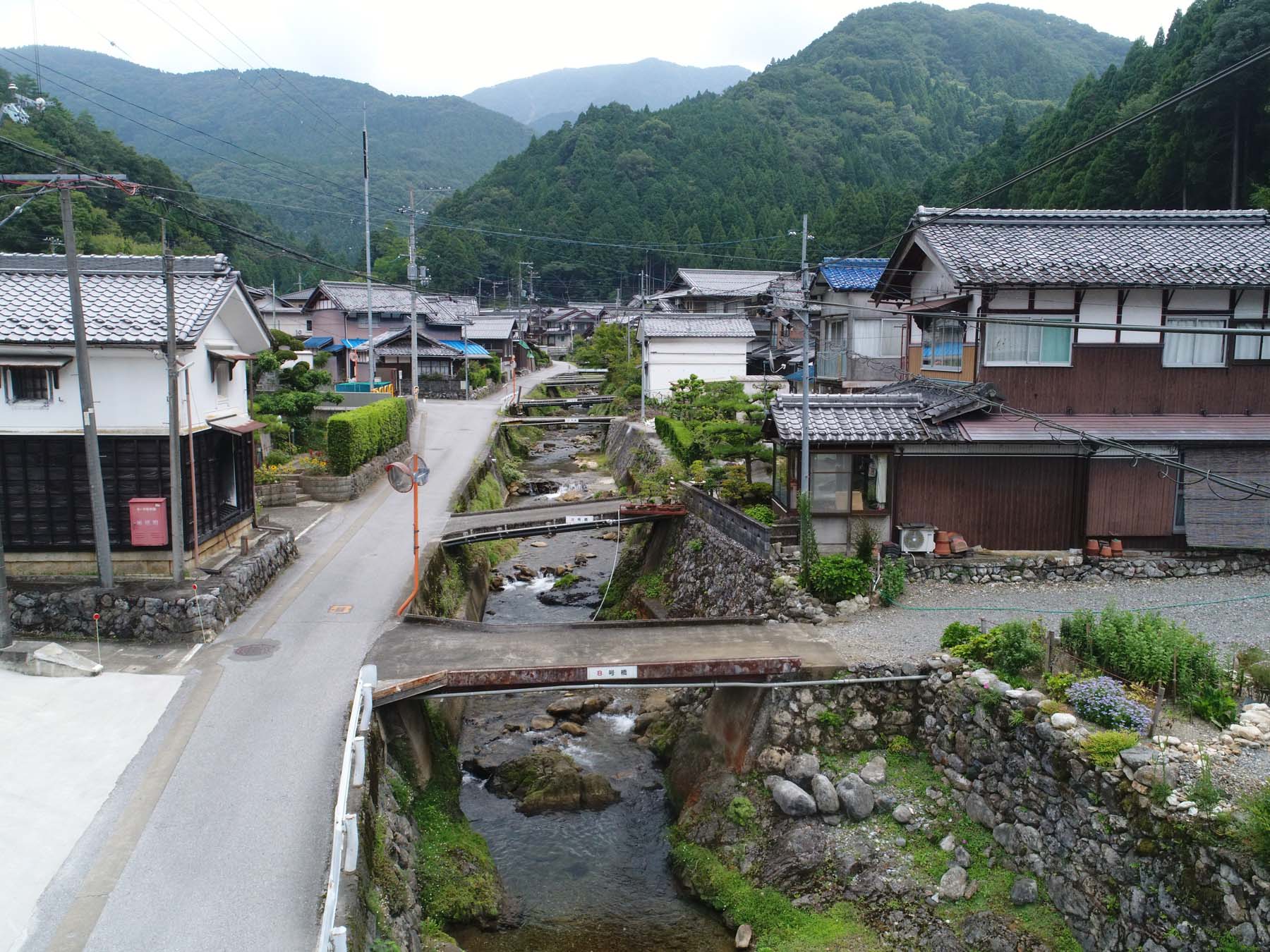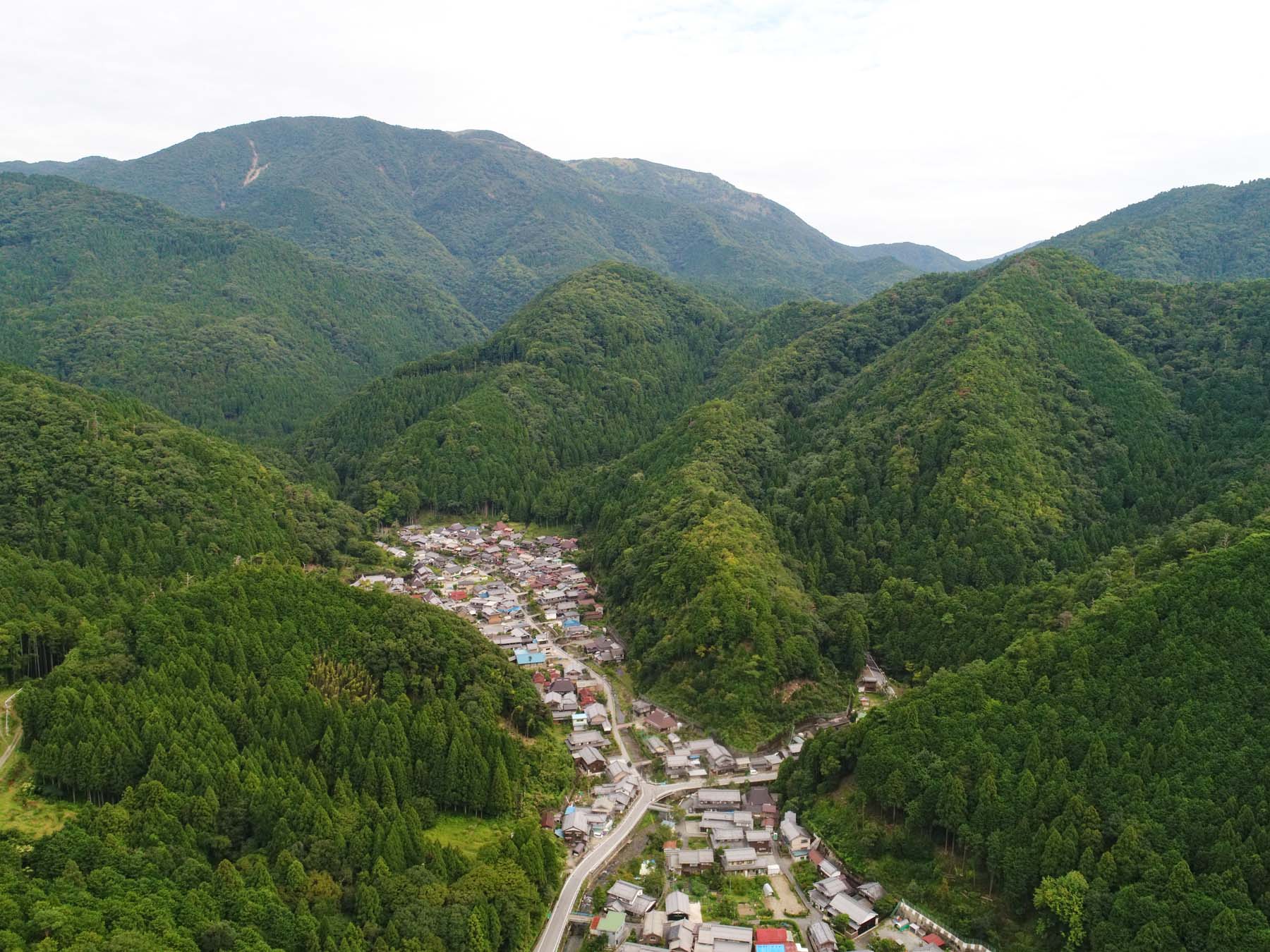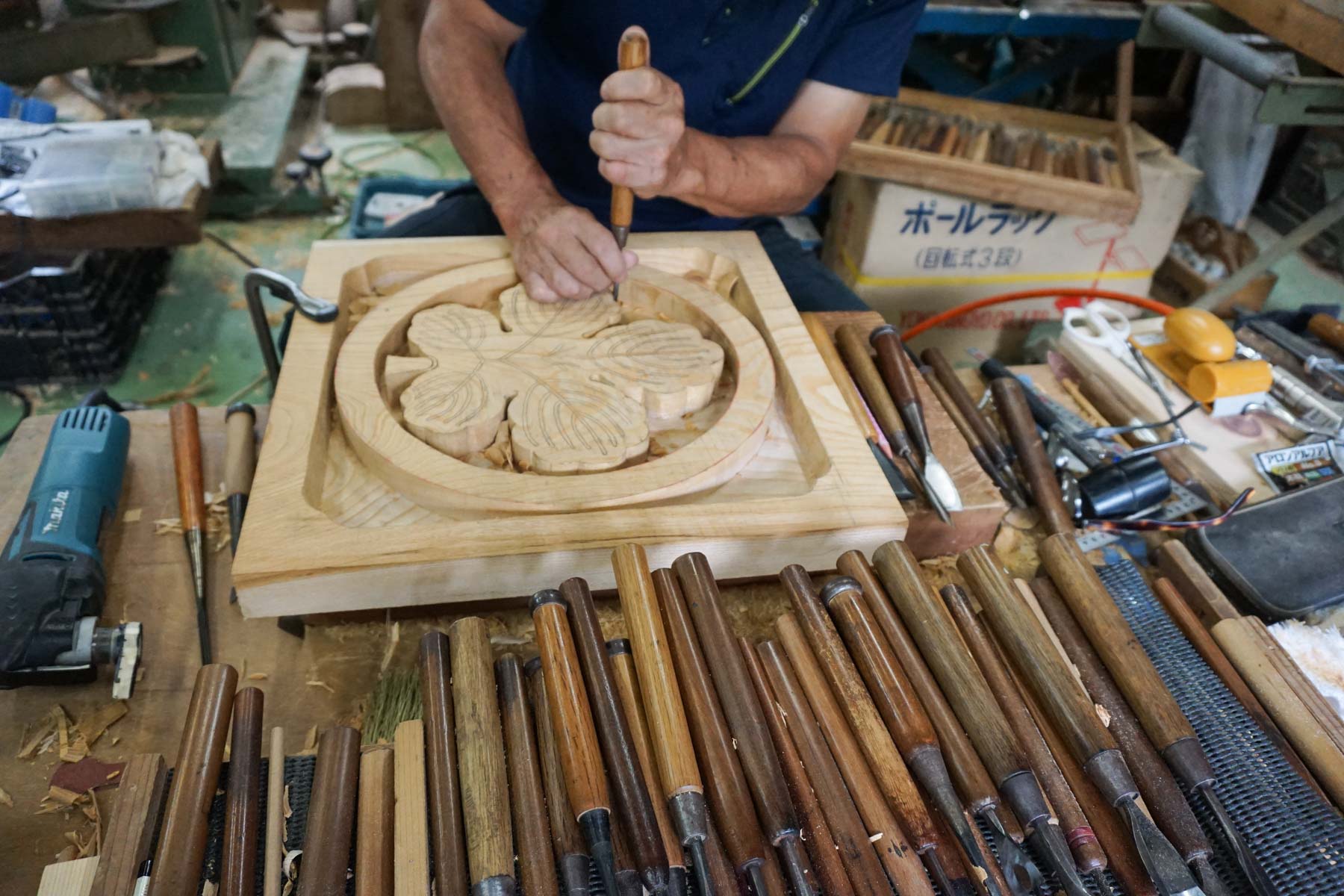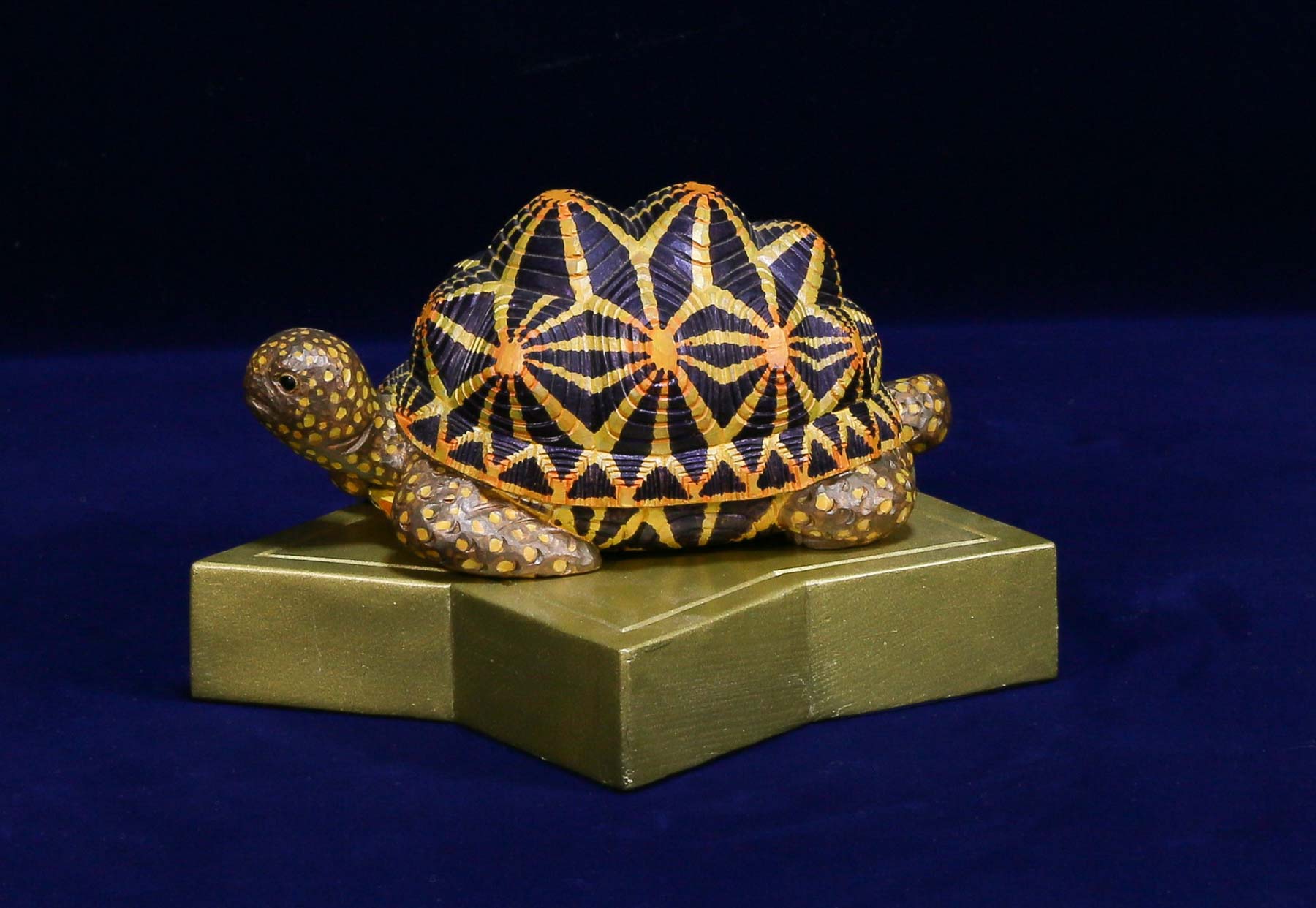

Heading east from Maibara Station, follow a river valley up to the foothills of Mt. Ryozen, and you'll reach our community of Kaminyu, long known as "the village of woodcarving."
A charming river runs through the middle of the village, so there are a number of small bridges allowing access back and forth for the locals. Homes and workshops of the local craftsmen line the banks of the river, adding to the idyllic beauty of this quiet mountain village.
Kaminyu is a rare community that has preserved and passed down the tradition of skilled woodcarving from generation to generation in harmony with the surrounding beauty of nature.

The surrounding mountain valley offers little arable land. In ancient times, villagers here relied heavily on forestry. Then, in the late Edo period, a son of a temple carpenter, Yusuke Ueda, and his friend, Shichiemon Kawaguchi, left the village to apprentice with woodcarvers of Kyoto, and eventually brought the skills acquired there back to their hometown. This was the origin of the woodcarving tradition in Kaminyu.

Initially, Kaminyu carvings were made mainly for temples and shrines, such as temple carvings and ranma partition panels. In the postwar era, when the US dollar reached 360 yen, burnt cedar carving exports flourished, and in this period of rapid economic growth, local carvings for Buddhist altars thrived thanks to the village's proximity to Hikone and Nagahama, established production centers of butsudan, or Buddhist home altars. As a result, a wider range of artisans, including woodcarvers, wood joiners, painters, and metalworkers, gathered in Kaminyu, and altar carving became a main trade of the village.
At present, a vast range of works are produced daily, including shrine and temple carvings, architectural carvings such as carved exposed rafters, and decorative rafter end pieces, festival floats and danjiri carvings, and house decorations such as ranma partition panels and nameplates, etc. Recent times have also brought bolder aesthetic departures from tradition which have flourished as well, and the possibilities of Kaminyu woodcarving are ever expanding.

